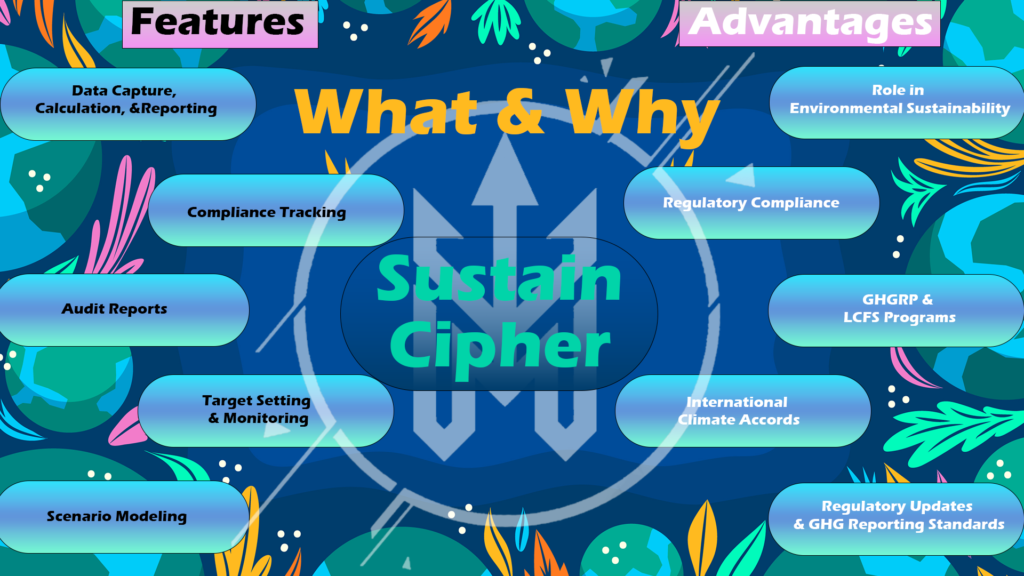
INTRODUCTION
In today’s environmentally conscious world, businesses face increasing pressure not only to minimize their carbon footprint but also to prove it. Emission management software has become a vital tool in this process, enabling organizations to track, analyze, and report their greenhouse gas (GHG) emissions effectively. This blog explores why emission management software is not just beneficial but essential for modern enterprises aiming for sustainability.
THE IMPORTANCE OF EMISSION MONITORING
Emission monitoring goes beyond mere regulatory compliance. It serves as a cornerstone for any serious environmental strategy, helping businesses understand their impact on the planet. Accurate monitoring and reporting allow companies to identify key areas where they can reduce emissions, enhance energy efficiency, and transition to greener alternatives.
Detailed Benefits of Emission Management Software
Data-Driven Decisions: Emission management software provides comprehensive data analytics tools that allow companies to assess and strategize their emission reduction efforts effectively. For example, by analyzing trends and patterns in energy usage, companies can implement targeted initiatives that reduce their carbon footprint and operational costs.
Regulatory Compliance: With the ever-evolving landscape of environmental regulations, emission management software helps companies stay compliant with both local and international standards. The software can adapt to changes like the California Corporate Data Accountability Act (SB 253), ensuring that businesses meet all legal requirements seamlessly.
Streamlined Reporting: Whether it’s for internal stakeholders or compliance with global agreements like the Paris Accord, emission management software simplifies the creation of detailed, audit-ready reports. This not only saves time but enhances the credibility of the data reported, making it a reliable source for making informed decisions.
Strategic Planning: Advanced features like scenario modeling enable businesses to forecast and plan for future scenarios. For instance, a company can simulate the impact of switching to renewable energy sources on its overall emissions and costs, facilitating more informed decision-making.
REAL WORLD APPLICATIONS OF EMISSION MANAGEMENT SOFTWARE
Case Study 1: Renewable Energy Sector
Company: A leading renewable energy provider
Challenge: Managing and reporting carbon emissions across multiple international facilities.
Solution: The company implemented emission management software to centralize data collection and enhance the accuracy of its carbon footprint analysis.
Outcome: Improved data-driven decisions led to a 30% increase in energy efficiency and alignment with the EU’s Green Deal objectives, significantly boosting the company’s market competitiveness and regulatory compliance.
Case Study 2: Global Retail Chain
Company: A multinational retail corporation
Challenge: The need to reduce supply chain emissions and comply with global sustainability standards.
Solution: The retailer adopted emission management software to integrate and analyze emissions data from over 1,000 suppliers worldwide.
Outcome: The software enabled the retailer to identify high-emission suppliers and develop targeted reduction strategies, resulting in a 20% reduction in overall supply chain emissions within two years.
CONCLUSION
Emission management software is no longer a luxury but a necessity for modern businesses. By enabling precise tracking, regulatory compliance, and strategic planning, it empowers businesses to not only meet but exceed their environmental responsibilities. As the demand for transparency and sustainability grows, the role of such software will only become more central in helping businesses navigate the complexities of carbon management and contribute effectively to the global effort towards a sustainable future.
By focusing on these core aspects, businesses can ensure they not only comply with the latest standards but also drive meaningful change towards a greener planet.

